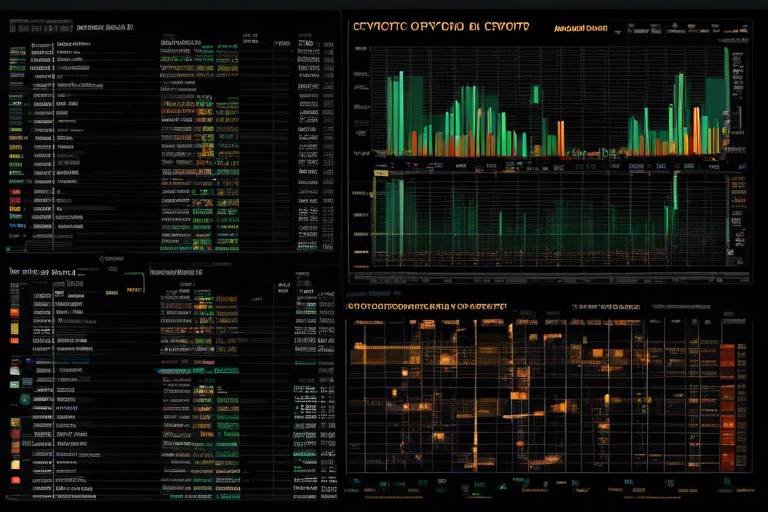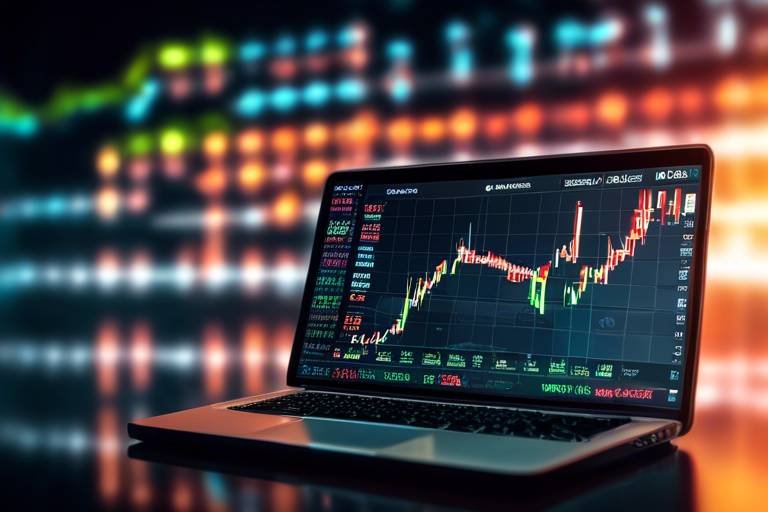How to Use Data Visualization for Crypto Analysis
In today's fast-paced world of cryptocurrency trading, the ability to quickly interpret data can make all the difference between a successful investment and a costly mistake. Data visualization plays a crucial role in this process, as it transforms complex datasets into easily digestible visual formats. Imagine trying to navigate through a dense forest without a map; that’s what analyzing crypto trends can feel like without proper visualization tools. By utilizing various visualization techniques, investors and traders can uncover hidden patterns and insights that may not be immediately apparent through raw data alone.
As cryptocurrencies continue to gain traction, the importance of data visualization becomes even more pronounced. The volatility of the market means that timely and informed decisions are necessary to capitalize on opportunities or mitigate losses. Data visualization not only helps in tracking price movements but also in assessing market sentiment, trading volumes, and overall trends. With the right visual tools, you can turn a mountain of data into a clear, actionable roadmap, guiding your investment strategies.
In this article, we will explore the various aspects of data visualization in the context of cryptocurrency analysis. From understanding the fundamental concepts of visualization to discovering the best tools available, we will provide you with insights that can enhance your decision-making process. We will delve into the types of visualizations commonly used, such as line charts and heat maps, and discuss how to interpret these visuals effectively. By the end of this guide, you will be equipped with the knowledge to leverage data visualization as a powerful ally in your crypto trading journey.
Data visualization is the art and science of representing data in a visual format, such as charts, graphs, and maps. It allows analysts to see patterns, trends, and outliers in data that might be missed in traditional tabular formats. In the realm of cryptocurrency, where data is abundant and often overwhelming, visualization becomes a key tool for simplifying information. By transforming numbers into visuals, investors can quickly grasp complex concepts and make informed decisions.
For instance, consider the difference between looking at a long list of daily prices for Bitcoin versus viewing a line chart that illustrates its price movement over time. The latter not only makes it easier to identify trends but also helps in spotting potential entry and exit points for trades. The relevance of data visualization in crypto analysis cannot be overstated; it’s like having a treasure map that points you to the best opportunities in the market.
When it comes to data visualization in cryptocurrency analysis, having the right tools at your disposal is essential. There are numerous software and platforms designed specifically for this purpose. These tools enable analysts to create effective visual representations of cryptocurrency data, making it easier to track market trends and make informed decisions.
Charting platforms are vital for real-time data visualization, allowing users to view live price movements and market changes. These platforms offer a variety of features, including interactive charts, technical indicators, and customizable settings. By using charting tools, traders can analyze historical data and predict future price movements with greater accuracy.
One of the most popular charting platforms is TradingView. This platform offers a wide range of tools for technical analysis, including interactive charts that allow users to zoom in on specific time frames. Additionally, TradingView has a vibrant community of traders who share their insights and strategies, making it a valuable resource for anyone looking to enhance their crypto analysis. The platform’s user-friendly interface and extensive library of indicators make it accessible for both beginners and seasoned traders.
CoinMarketCap is another essential tool for cryptocurrency analysis, providing a comprehensive overview of market data. With its visualization tools, users can track price movements, market capitalization, and trading volumes across thousands of cryptocurrencies. The platform’s user-friendly charts and graphs make it easy to understand market dynamics at a glance, allowing traders to make informed decisions based on real-time data.
Reliable data sources are crucial for accurate visualization. Without trustworthy data, even the most sophisticated visualizations can lead to misguided decisions. Some of the best sources for obtaining cryptocurrency data include:
- CoinGecko
- CryptoCompare
- CoinAPI
- Messari
By utilizing these sources, analysts can ensure that their visualizations reflect real-time market conditions, enhancing the overall effectiveness of their analysis.
Different types of visualizations serve various analytical purposes in the cryptocurrency space. Understanding these types can greatly enhance your ability to analyze market data effectively. Common visualization types include line charts, bar graphs, and heat maps, each offering unique insights into market behavior.
Line charts are particularly popular for showing price trends over time. They are effective in tracking cryptocurrency price movements, allowing traders to identify potential investment opportunities. A well-constructed line chart can reveal patterns that indicate when to buy or sell, making it an invaluable tool for any trader.
On the other hand, heat maps provide a visual representation of data density, making them useful for analyzing market sentiment and trading volumes. By using color gradients, heat maps can quickly convey where activity is concentrated, helping traders to gauge the overall health of the market.
Interpreting visual data is essential for making informed decisions in the crypto market. It’s not enough to just create visualizations; you must also know how to analyze and extract insights from them. Recognizing trends, spotting anomalies, and understanding market sentiment are all critical components of successful trading.
Recognizing trends is key to successful trading. By analyzing visual data representations, you can spot bullish or bearish trends that can inform your trading strategy. Techniques such as moving averages and trend lines can help in identifying these trends, allowing you to make timely decisions.
Data visualization can also aid in forecasting future price movements. By examining historical data and visual patterns, traders can make educated predictions about cryptocurrency market behavior. This predictive capability is invaluable in a market known for its volatility, helping traders to stay one step ahead.
Q: What is data visualization?
A: Data visualization is the graphical representation of information and data. It uses visual elements like charts, graphs, and maps to make complex data more accessible and understandable.
Q: Why is data visualization important in cryptocurrency analysis?
A: Data visualization helps traders and investors identify trends, patterns, and anomalies in the cryptocurrency market, enabling them to make informed decisions quickly.
Q: What tools are best for data visualization in crypto?
A: Popular tools include TradingView and CoinMarketCap, which offer robust features for analyzing and visualizing cryptocurrency data.
Q: How can I improve my data visualization skills?
A: Practice using different visualization tools, study various chart types, and continuously analyze market data to enhance your skills.

Understanding Data Visualization
Data visualization is a powerful tool that transforms complex data sets into visual formats, making it easier for individuals to comprehend intricate information at a glance. Imagine trying to decipher a dense spreadsheet filled with numbers and statistics—overwhelming, right? Now, picture that same data represented as a colorful graph or chart. Instantly, patterns emerge, and trends become visible, allowing for quicker and more informed decision-making. This is the essence of data visualization, especially in the fast-paced world of cryptocurrency.
In the realm of crypto analysis, data visualization plays a crucial role. With thousands of cryptocurrencies available and their prices fluctuating wildly, investors and traders need to quickly identify trends to make strategic decisions. By utilizing visual representations, analysts can easily spot correlations, anomalies, and patterns that might otherwise go unnoticed in raw data. Whether it's tracking price movements, trading volumes, or market sentiment, effective data visualization can be the difference between a successful trade and a missed opportunity.
One of the fundamental concepts of data visualization is the idea of clarity. Clear visuals not only convey information effectively but also engage the viewer. Think of a well-designed infographic; it draws you in, making you want to explore the data further. In contrast, cluttered or poorly designed visuals can confuse and mislead, which is particularly detrimental in the high-stakes environment of cryptocurrency trading.
Moreover, data visualization is not just about aesthetics; it also enhances data storytelling. By presenting data visually, analysts can narrate a story that helps stakeholders understand the implications of the data. For instance, a line chart depicting Bitcoin's price over the past year can tell a compelling story of volatility, recovery, and growth, which can influence investment decisions significantly.
In summary, understanding data visualization is essential for anyone involved in cryptocurrency analysis. It simplifies complex data, enhances clarity, and promotes better decision-making through effective data storytelling. As we delve deeper into the tools and techniques available for visualizing crypto data, keep in mind how pivotal these visual aids can be for your investment strategies.

Key Visualization Tools
In the fast-paced world of cryptocurrency, having the right tools at your fingertips can make all the difference. Data visualization tools are essential for traders and investors who want to make sense of the ever-changing market dynamics. With a plethora of options available, it's crucial to choose tools that not only provide accurate data but also present it in an easily digestible format. This section will explore some of the most popular visualization tools that can enhance your crypto analysis and decision-making processes.
One of the standout features of these tools is their ability to transform raw data into visual formats that highlight trends and patterns. For instance, platforms like TradingView and CoinMarketCap offer robust charting capabilities that cater specifically to the needs of cryptocurrency enthusiasts. These platforms allow users to create interactive charts, apply technical indicators, and even compare multiple cryptocurrencies side by side. By leveraging these tools, traders can quickly identify market movements and make informed decisions.
To give you a clearer picture, here's a quick comparison of some key visualization tools:
| Tool | Features | Best For |
|---|---|---|
| TradingView | Interactive charts, social networking, extensive technical analysis tools | Real-time analysis and community insights |
| CoinMarketCap | Comprehensive market data, price tracking, historical data visualization | Overall market overview and trend tracking |
| Cryptowatch | Real-time price data, customizable charts, alerts | Active trading and monitoring |
| Tableau | Advanced data analytics, interactive dashboards, integration with multiple data sources | In-depth analysis and reporting |
Choosing the right tool often comes down to your specific needs and trading style. For example, if you thrive on community insights and want to engage with other traders, TradingView might be your best bet. On the other hand, if you're looking for a comprehensive market overview, CoinMarketCap could provide the insights you need to track market trends effectively.
Moreover, it's essential to consider the user interface and ease of use when selecting a visualization tool. A platform that is too complex can lead to confusion and missed opportunities. Thus, opting for tools that offer intuitive designs and user-friendly functionalities can significantly enhance your analytical capabilities.
In conclusion, the right visualization tools can elevate your cryptocurrency analysis to new heights. By utilizing platforms like TradingView, CoinMarketCap, and others, you can gain valuable insights that inform your trading strategies. Remember, a well-informed trader is often a successful trader, so invest time in exploring these tools to find the perfect fit for your needs.
- What is data visualization in cryptocurrency? Data visualization in cryptocurrency refers to the graphical representation of data related to cryptocurrencies, allowing traders to identify trends and make informed decisions.
- Why are visualization tools important for crypto analysis? They help in simplifying complex data, making it easier to spot patterns, trends, and potential investment opportunities.
- Can I use free tools for data visualization? Yes, many visualization tools offer free versions with sufficient features to get you started, such as CoinMarketCap and TradingView.
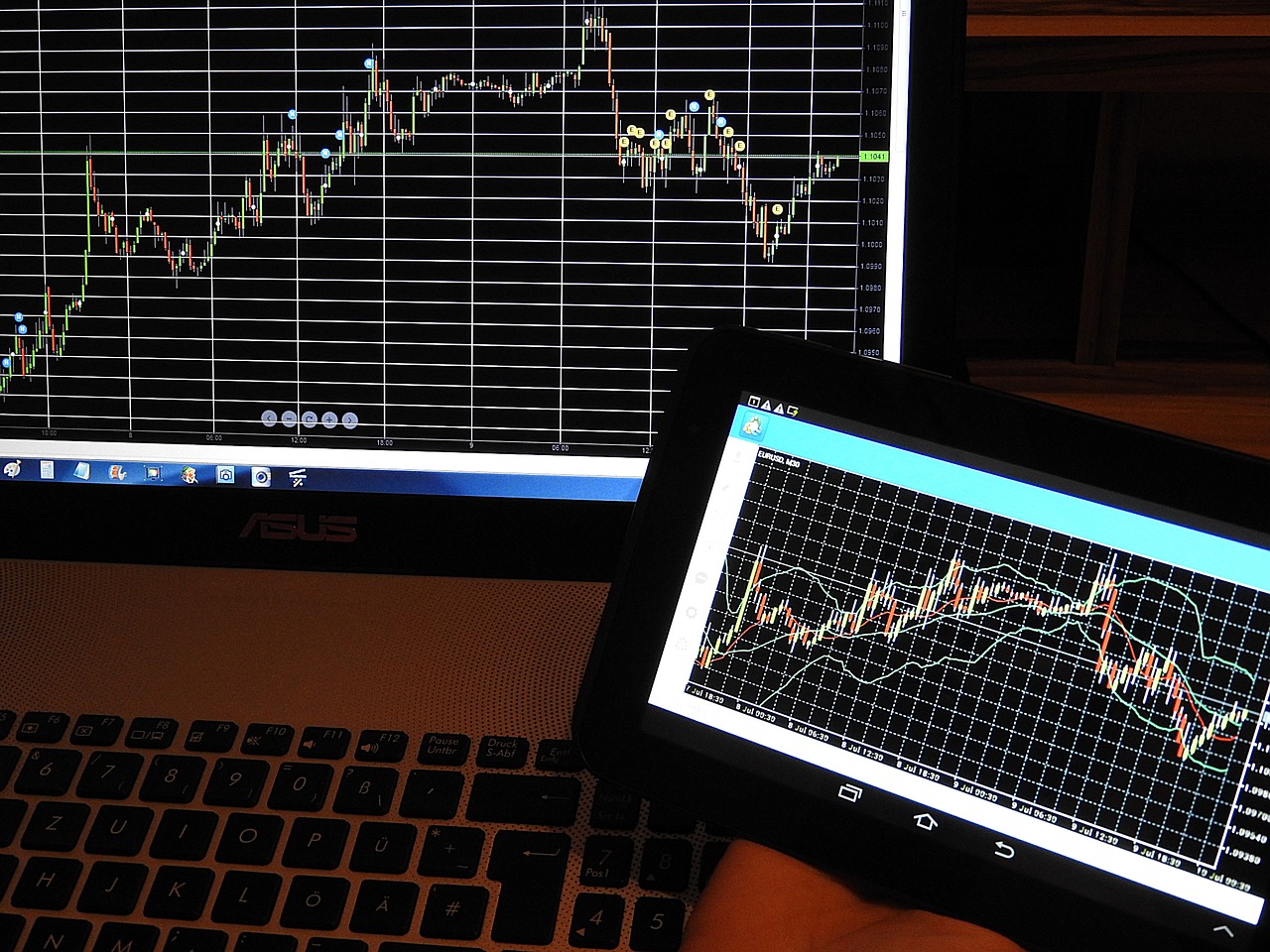
Charting Platforms
When it comes to navigating the volatile waters of cryptocurrency trading, having the right charting platform can be a game-changer. These platforms provide traders and investors with the tools they need to visualize data, analyze trends, and make informed decisions. Imagine trying to read a map in the dark; without proper lighting, you might miss critical turns or landmarks. Similarly, without effective charting tools, you may overlook essential market signals that could lead to profitable trades.
Charting platforms come equipped with a variety of features that cater specifically to the unique demands of the cryptocurrency market. They allow users to create real-time visualizations of price movements, trading volumes, and market cap data. By leveraging these platforms, traders can spot emerging trends, identify potential entry and exit points, and ultimately enhance their trading strategies.
Some of the most popular charting platforms include:
- TradingView: Known for its user-friendly interface and extensive community features, TradingView allows users to create customizable charts and share insights with other traders.
- Coinigy: This platform integrates multiple exchanges and offers advanced charting tools, making it easier to track various cryptocurrencies in one place.
- CryptoCompare: With a focus on comparative analysis, CryptoCompare provides tools for visualizing price changes across different exchanges.
Each of these platforms has its own strengths and weaknesses, but they all share a common goal: to make data more accessible and actionable for traders. For instance, TradingView excels in social networking, allowing users to follow seasoned traders and learn from their strategies. On the other hand, Coinigy offers robust trading capabilities directly from its platform, letting users execute trades without switching screens.
In addition to these features, many charting platforms also offer educational resources, such as tutorials and webinars, to help users maximize their understanding of market trends. This is particularly beneficial for newcomers to the crypto space, as the learning curve can be quite steep. By utilizing these resources, traders can become more adept at interpreting data visualizations and applying them to their trading strategies.
In conclusion, selecting the right charting platform is crucial for anyone serious about cryptocurrency trading. With the right tools at your disposal, you can illuminate the often murky waters of the crypto market, enabling you to make more informed and strategic decisions. So, whether you're a seasoned trader or just starting out, investing time in finding the best charting platform for your needs can pay off significantly in your trading journey.
- What is a charting platform? A charting platform is a software tool that allows traders to visualize market data through various types of charts and graphs, helping them analyze trends and make informed trading decisions.
- How do I choose the right charting platform? Consider factors such as user interface, available features, integration with exchanges, and educational resources when selecting a charting platform.
- Can I use multiple charting platforms at once? Yes, many traders use more than one platform to take advantage of different features and data sources.

TradingView
When it comes to analyzing cryptocurrency trends, stands out as a powerful tool that offers a plethora of features designed for both novice and seasoned traders. With its user-friendly interface and a vast array of charting options, it enables users to visualize data in ways that make complex market movements easier to understand. Imagine having a crystal ball that not only shows you the current state of the market but also allows you to dive deep into historical data to spot patterns—this is precisely what TradingView offers.
One of the standout features of TradingView is its interactive charts. These charts allow users to apply various technical indicators, trend lines, and drawing tools that can help in making informed trading decisions. For example, you can easily overlay moving averages or Bollinger Bands on your price charts, which can illuminate potential entry and exit points. Additionally, the platform supports multiple chart types, including candlestick, line, and area charts, making it versatile for different analytical needs.
Moreover, TradingView fosters a vibrant community of traders who share ideas and strategies through its social networking features. Users can publish their analyses, comment on others' charts, and even collaborate on trading strategies. This aspect of TradingView transforms it from just a charting tool into a community-driven platform where learning and sharing knowledge is encouraged. You might wonder how beneficial this community is—well, consider it like having a team of experts at your fingertips, ready to provide insights and feedback.
Another great advantage of TradingView is its real-time data. The platform pulls data from various exchanges, ensuring that the information you see is accurate and up-to-date. This is crucial in the fast-paced world of cryptocurrency, where prices can fluctuate wildly in a matter of seconds. To give you a clearer picture of its capabilities, here’s a brief overview of some key features:
| Feature | Description |
|---|---|
| Customizable Charts | Users can adjust the layout, colors, and indicators to suit their preferences. |
| Technical Indicators | Access to a wide range of indicators to analyze market trends effectively. |
| Social Networking | Engage with a community of traders to share insights and strategies. |
| Alerts | Set price alerts to stay informed about significant market movements. |
In conclusion, TradingView is more than just a tool; it's a comprehensive platform that empowers traders to make better decisions through effective data visualization. Whether you're looking to analyze past data, share your insights, or connect with other traders, TradingView has you covered. So, if you're serious about navigating the cryptocurrency landscape, this platform is definitely worth considering.

CoinMarketCap
When it comes to cryptocurrency analysis, stands out as one of the most comprehensive platforms available. It provides a wealth of data that can be invaluable for traders and investors looking to make informed decisions. With its user-friendly interface and extensive range of features, CoinMarketCap makes it easy to track the performance of thousands of cryptocurrencies in real-time. Whether you're a seasoned trader or just starting out, understanding how to leverage CoinMarketCap can significantly enhance your crypto analysis.
One of the key features of CoinMarketCap is its ability to display detailed information about various cryptocurrencies, including market capitalization, trading volume, price changes, and historical data. This information is crucial for anyone looking to gauge the health of a particular asset or the market as a whole. The platform also offers a variety of visualization tools that allow users to create customized charts and graphs, making it easier to spot trends and make predictions. For example, users can easily compare the performance of multiple cryptocurrencies side by side, which can be particularly useful when deciding where to invest.
Additionally, CoinMarketCap is not just about numbers; it also provides insightful articles and news updates that can help users stay informed about the latest developments in the cryptocurrency world. This is essential in a market that is constantly evolving, as external factors such as regulatory changes or technological advancements can have a significant impact on prices. By keeping an eye on the news and understanding the context behind market movements, traders can make more educated decisions.
Moreover, CoinMarketCap features a robust API that allows developers to integrate its data into their own applications. This is particularly beneficial for those who want to create custom dashboards or tools for crypto analysis. The API provides access to real-time and historical data, enabling users to build sophisticated models and visualizations tailored to their specific needs.
In summary, CoinMarketCap is an essential tool for anyone involved in cryptocurrency trading or investment. Its combination of comprehensive data, powerful visualization tools, and up-to-date news coverage makes it a go-to resource. By utilizing CoinMarketCap effectively, users can enhance their analytical capabilities and make more informed decisions in the fast-paced world of cryptocurrency.

Data Sources for Visualization
When it comes to data visualization in the cryptocurrency realm, the foundation lies in the quality and reliability of the data sources you choose. After all, what’s the point of creating stunning visuals if the underlying data is flawed or outdated? In the fast-paced world of crypto, having access to real-time and accurate data is crucial for making informed decisions. Think of these data sources as the ingredients in a recipe; the better the ingredients, the more delicious the final dish will be.
There are several reputable platforms that provide comprehensive data on cryptocurrencies, each with its own unique features and offerings. Some of the most popular sources include:
- CoinGecko: Known for its extensive database of cryptocurrencies, CoinGecko not only provides price data but also offers insights into market capitalization, trading volume, and developer activity. It’s like having a Swiss Army knife for crypto data!
- CoinMarketCap: This platform is a staple in the crypto community, offering a plethora of data including historical price charts, market trends, and even social media sentiment analysis. It’s your go-to for a comprehensive overview of the market.
- CryptoCompare: With a focus on providing comparative data, CryptoCompare is excellent for analyzing different cryptocurrencies side-by-side. This can be particularly useful when deciding which assets to invest in.
- Messari: For those looking for in-depth analytics and research, Messari provides a wealth of information including fundamental data, news, and insights from industry experts. It’s like having a personal research assistant!
Each of these platforms offers various tools and features that can significantly enhance your data visualization efforts. For instance, CoinGecko and CoinMarketCap both provide APIs that allow you to pull real-time data directly into your own applications or visualizations. This capability can save you a lot of time and ensure that you’re always working with the latest information.
Moreover, it's essential to consider the granularity of the data you require. Are you interested in minute-by-minute price changes, or do you want to analyze long-term trends? Some sources excel in providing detailed historical data, while others focus on real-time analytics. Understanding your specific needs will help you choose the right platform for your visualization tasks.
In summary, the right data sources are paramount for effective data visualization in cryptocurrency analysis. By leveraging reliable platforms like CoinGecko, CoinMarketCap, CryptoCompare, and Messari, you can ensure that your visualizations are not only eye-catching but also grounded in solid, actionable data. Remember, in the world of crypto, knowledge is power, and having access to the best data sources will empower you to make smarter investment decisions.

Types of Visualizations
When it comes to analyzing the ever-evolving world of cryptocurrencies, the way we visualize data can make a significant difference in our understanding and decision-making. Different types of visualizations serve various analytical purposes, and knowing which one to use can be the key to unlocking valuable insights. Imagine trying to navigate a vast ocean without a map; that's what analyzing crypto trends without proper visual aids feels like. In this section, we'll explore some of the most common visualization types used in crypto analysis, including line charts, bar graphs, and heat maps, each offering unique perspectives on market data.
First up, line charts. These are the bread and butter of price trend analysis. A line chart connects data points over time, creating a continuous line that illustrates price movements. This visualization is particularly effective for spotting trends, as it allows investors to see at a glance whether a cryptocurrency is on the rise or decline. For example, if you were to plot the price of Bitcoin over the past month, the resulting line chart would reveal fluctuations, peaks, and troughs, helping you identify potential entry and exit points. The beauty of line charts lies in their simplicity; they provide a clear picture without overwhelming the viewer with too much information.
Next, we have heat maps, which take a different approach to data visualization. Instead of focusing solely on price trends, heat maps provide a colorful representation of data density, allowing traders to visualize market sentiment and trading volumes at a glance. Each color on a heat map corresponds to a certain value, with warmer colors indicating higher activity or price levels. This can be invaluable in identifying which cryptocurrencies are gaining traction and which ones are losing interest. For instance, if you see a sea of red on a heat map, it might signal a bearish trend, while a vibrant array of greens could indicate bullish momentum.
To further illustrate the differences between these visualization types, let's take a look at a comparison table:
| Visualization Type | Purpose | Advantages |
|---|---|---|
| Line Charts | Track price trends over time | Simple, clear representation of data; easy to identify trends |
| Heat Maps | Visualize market sentiment and trading volumes | Quickly identifies areas of high and low activity; visually appealing |
In addition to line charts and heat maps, other visualizations like bar graphs and candlestick charts also play crucial roles in crypto analysis. Bar graphs can effectively compare the performance of multiple cryptocurrencies over a specific period, while candlestick charts offer a more detailed view of price movements, including open, close, high, and low values within a defined timeframe. Each of these tools has its own strengths, and the best analysts often use a combination of them to gain a comprehensive understanding of the market.
Ultimately, the choice of visualization will depend on the specific insights you are looking to gain. Are you interested in tracking long-term trends, or do you need to understand short-term fluctuations? The answer to that question will guide you in selecting the most appropriate visualization type for your analysis. As the crypto market continues to grow and evolve, mastering these visualization techniques will empower traders and investors to make more informed decisions, ensuring they stay ahead of the curve.
- What is the best type of visualization for beginners? Line charts are often recommended for beginners as they provide a straightforward view of price trends over time.
- How can heat maps help in trading? Heat maps can quickly indicate market sentiment and trading volumes, helping traders identify which cryptocurrencies are gaining or losing interest.
- Are there tools specifically for creating these visualizations? Yes, platforms like TradingView and CoinMarketCap offer robust tools for creating various types of visualizations tailored for cryptocurrency analysis.

Line Charts
When it comes to analyzing cryptocurrency price movements, are among the most effective tools at your disposal. Imagine trying to navigate a winding road without a map; that’s what analyzing crypto prices can feel like without the clarity that line charts provide. They visually represent price data over time, allowing investors and traders to see trends at a glance. By connecting data points with a continuous line, these charts reveal the overall direction of a cryptocurrency's price, making it easier to identify potential entry and exit points.
One of the most significant advantages of line charts is their simplicity. They strip away the noise that can often accompany more complex visualizations. Instead of getting lost in a sea of information, users can focus on the essential trends. For example, if you’re tracking Bitcoin over the last month, a line chart will clearly show you the peaks and valleys, helping you recognize whether the price is generally rising or falling. This is crucial for making informed decisions about when to buy or sell.
Moreover, line charts can be enhanced with additional data, such as moving averages, which smooth out price fluctuations and provide a clearer picture of the underlying trend. By adding a moving average line to your chart, you can better understand whether the current price is above or below the average over a specified period, which can signal potential buying or selling opportunities. Here’s how a basic line chart might look:
| Date | Price (USD) |
|---|---|
| 01/01/2023 | 30,000 |
| 01/02/2023 | 32,500 |
| 01/03/2023 | 31,000 |
| 01/04/2023 | 33,000 |
| 01/05/2023 | 34,500 |
As you can see in the table above, the price of Bitcoin fluctuates over time, and a line chart would visually connect these points, allowing you to see the general trend. If you're noticing a consistent upward trajectory, it might be time to consider investing, while a downward trend could signal caution.
In summary, line charts serve as a powerful tool in the arsenal of crypto analysts. They not only simplify complex data but also enhance your ability to make informed decisions. By mastering the use of line charts, you can elevate your cryptocurrency analysis and improve your trading strategy.
- What is a line chart? A line chart is a graphical representation of data points connected by straight lines, typically used to track changes over time.
- How do I interpret a line chart? Look for trends in the data; upward trends indicate increasing prices, while downward trends suggest decreasing prices.
- Can I use line charts for other types of data? Absolutely! Line charts can be used for any data that changes over time, not just cryptocurrency.
- What are moving averages? Moving averages are calculations that help smooth out price data by creating a constantly updated average price over a specific period.

Heat Maps
Heat maps are a powerful tool in the world of cryptocurrency analysis, providing a visual representation that can make complex data easier to digest. Imagine walking into a crowded room where everyone is speaking at once; it can be overwhelming, right? Now, picture instead that each person has a color-coded tag that indicates their level of excitement or engagement. That’s precisely what heat maps do for data—they allow you to quickly grasp where the action is happening in the market.
In the context of cryptocurrencies, heat maps can represent various metrics such as trading volume, price changes, and even market sentiment. For instance, a heat map might use a gradient of colors ranging from green (indicating strong performance) to red (indicating significant losses). This visual cue helps traders and investors quickly identify which cryptocurrencies are gaining traction and which ones are lagging behind.
One of the most significant advantages of heat maps is their ability to display data density. By visualizing the concentration of trades or price movements, users can easily spot trends and make informed decisions. For example, if a particular cryptocurrency shows a high density of trades in a specific price range, it may indicate a strong support or resistance level. This kind of insight is invaluable for traders looking to optimize their entry and exit points.
Moreover, heat maps can also be used to analyze market sentiment. By tracking the volume of trades and price movements across different cryptocurrencies, analysts can gauge whether the market is feeling bullish or bearish. A heat map reflecting this sentiment can serve as an early warning system, alerting investors to potential shifts in the market before they happen.
To illustrate the effectiveness of heat maps, consider the following example:
| Cryptocurrency | Price Change (24h) | Trading Volume |
|---|---|---|
| Bitcoin (BTC) | +5% | $30B |
| Ethereum (ETH) | -2% | $15B |
| Litecoin (LTC) | +3% | $5B |
In this table, you can see how heat maps can effectively summarize the performance of different cryptocurrencies at a glance. The color coding immediately draws your attention to Bitcoin's strong performance and Ethereum's decline, allowing traders to make quick decisions based on visual data.
In conclusion, heat maps are not just a fancy way to display data; they are a crucial component of effective cryptocurrency analysis. By leveraging these visual tools, traders and investors can gain deeper insights into market dynamics, identify trends, and ultimately make more informed decisions. So, the next time you’re diving into the crypto market, consider incorporating heat maps into your analytical toolkit—they might just be the edge you need!

Interpreting Visual Data
Interpreting visual data is essential for making informed decisions in the fast-paced world of cryptocurrency trading. With the vast amount of data available, it can be overwhelming to sift through numbers and charts without a clear strategy. This is where a solid understanding of how to read and analyze visualizations comes into play. Visual data is not just about pretty graphs; it’s about extracting meaningful insights that can guide your trading decisions. Think of it as reading a map: without knowing how to interpret the symbols and routes, you might end up lost in a sea of information.
To effectively interpret visual data, you need to focus on a few key strategies. First, always start by identifying the context of the data. What are you trying to analyze? Are you looking at price trends, trading volumes, or market sentiment? Understanding the context will help you choose the right visualization type. For instance, if you want to track price movements over time, line charts are particularly effective. On the other hand, if you're interested in comparing the performance of multiple cryptocurrencies, a bar graph might be more suitable.
Next, consider the scale of the data. Are you looking at daily, weekly, or monthly trends? Different time frames can tell different stories. For example, a cryptocurrency may show a bullish trend over the long term, but when viewed on a daily scale, it could reveal short-term volatility. This is why it's crucial to adjust your perspective based on the scale of the data you are analyzing. A good practice is to switch between different time frames to gain a comprehensive understanding of the market dynamics.
Another important aspect is to look for patterns within the data. This can include recognizing support and resistance levels, which are crucial for making trading decisions. Support levels indicate where the price tends to stop falling and bounce back, while resistance levels show where the price tends to stop rising. By identifying these levels through visual data, traders can make educated guesses about future price movements.
Furthermore, visualizations can help in identifying trends. A bullish trend, characterized by rising prices, can often be spotted in line charts, while bearish trends show a decline. To effectively spot these trends, you can use various techniques such as moving averages or trend lines. These tools can simplify the visualization and help you see the overall direction of the market at a glance.
Finally, don't forget to leverage comparative analysis. By comparing different cryptocurrencies or their performance against major market indices, you can gain insights into which assets are likely to outperform others. For instance, if Bitcoin is showing a steady increase while Ethereum is stagnating, it might be worth considering a shift in your investment strategy. Comparative visualizations can be particularly useful here, as they allow you to visualize multiple datasets simultaneously.
In summary, interpreting visual data in cryptocurrency analysis is not just about understanding what the charts say; it’s about asking the right questions and knowing how to extract actionable insights. By focusing on context, scale, patterns, trends, and comparative analysis, you can navigate the complexities of the crypto market with greater confidence and precision.
- What is the best way to start interpreting visual data? Begin by understanding the context and what you aim to analyze. Choose the right type of visualization based on your goals.
- How can I identify trends in cryptocurrency? Look for patterns in line charts, and consider using moving averages for clearer trend detection.
- What tools can assist in visual data analysis? Platforms like TradingView and CoinMarketCap offer robust visualization tools that can enhance your analysis.
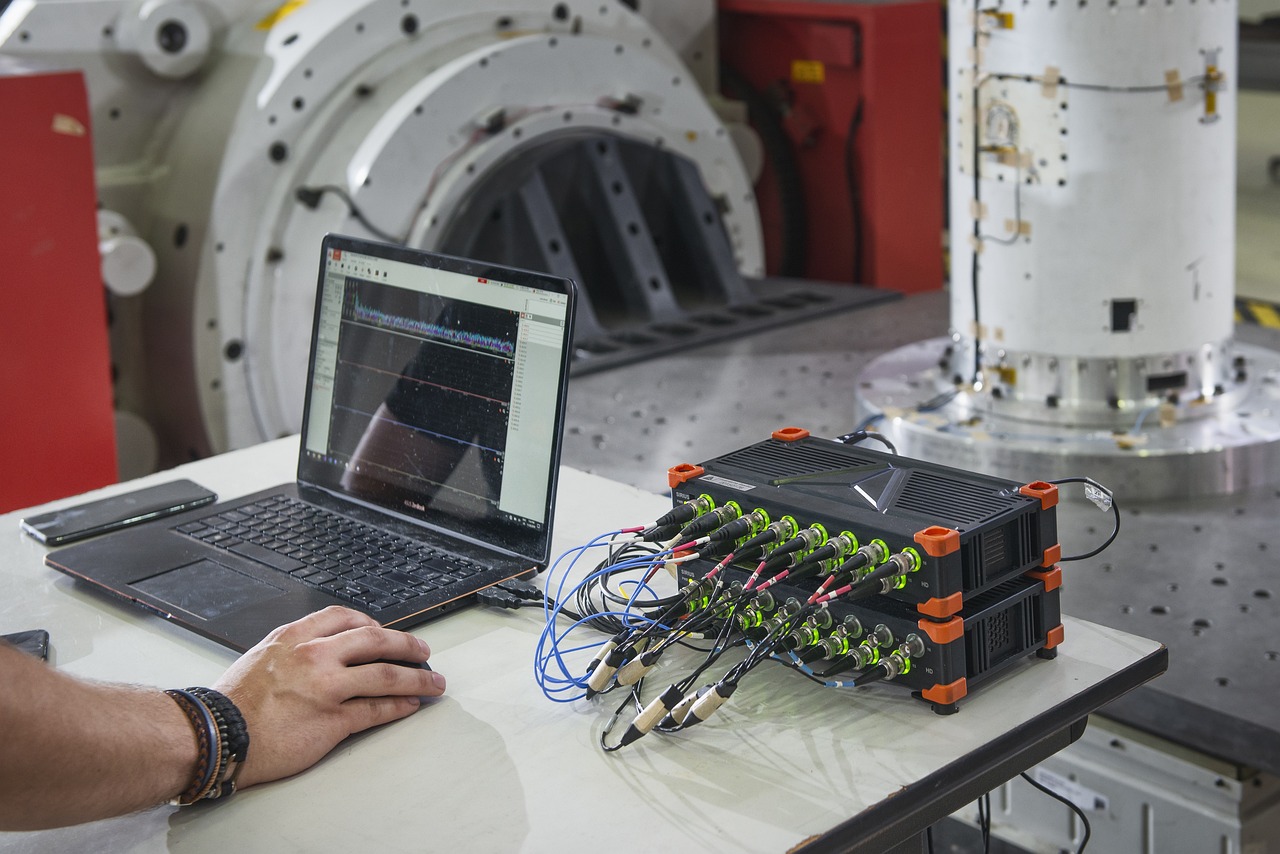
Identifying Trends
When it comes to trading in the volatile world of cryptocurrency, is not just a skill; it’s an art. Just like a seasoned chef knows how to blend flavors to create a masterpiece, a savvy trader knows how to read the signs in the market to craft a winning strategy. But how do you spot these trends? Well, let’s dive into some effective techniques that can help you navigate the choppy waters of crypto trading.
First off, understanding the basic types of trends is crucial. In the crypto market, you typically encounter three types of trends: uptrends, downtrends, and sideways trends. An uptrend indicates increasing prices, while a downtrend shows a decline. Sideways trends, on the other hand, suggest a period of consolidation where prices move within a narrow range. By recognizing these patterns, you can position yourself to make informed decisions. For instance:
| Trend Type | Description | Trading Strategy |
|---|---|---|
| Uptrend | Prices are consistently rising. | Consider buying to capitalize on growth. |
| Downtrend | Prices are consistently falling. | Look for short-selling opportunities. |
| Sideways Trend | Prices are stable with little movement. | Wait for a breakout before taking action. |
Now, how do you actually identify these trends? One of the most effective tools at your disposal is the moving average. This technique smooths out price data to help you see the overall direction. For example, if you plot a 50-day moving average on a chart and notice that the price is consistently above this line, it’s a strong indicator of an uptrend. Conversely, if the price frequently dips below the moving average, it may signal a downtrend.
Another essential technique for identifying trends is the use of trend lines. By drawing lines that connect the highs or lows of price movements, you can visualize the direction of the market. A trend line that slopes upwards indicates bullish sentiment, while a downward slope suggests bearish conditions. The beauty of trend lines is that they can also help you set support and resistance levels, which are critical for making trading decisions.
Don’t forget about volume! It’s not just about price movements; the volume of trades can provide additional insight into the strength of a trend. For example, if you see a price increase accompanied by high trading volume, it’s a strong bullish signal. On the flip side, if prices are rising but volume is low, it could indicate a lack of conviction in the trend, making it more susceptible to reversal.
In conclusion, identifying trends in the cryptocurrency market is a multifaceted process that requires a keen eye and a strategic approach. By employing tools like moving averages, trend lines, and volume analysis, you can enhance your ability to spot potential opportunities and make informed trading decisions. Remember, the crypto market is as unpredictable as a roller coaster ride, but with the right techniques, you can navigate it like a pro!
- What is the best way to identify trends in cryptocurrency? Using tools like moving averages and trend lines can significantly enhance your ability to spot trends.
- How important is trading volume in trend analysis? Trading volume is crucial as it indicates the strength of a price movement. High volume during an uptrend suggests strong bullish sentiment.
- Can trends change quickly in the crypto market? Yes, the crypto market is highly volatile, and trends can change rapidly, so it's essential to stay updated with market news and analysis.
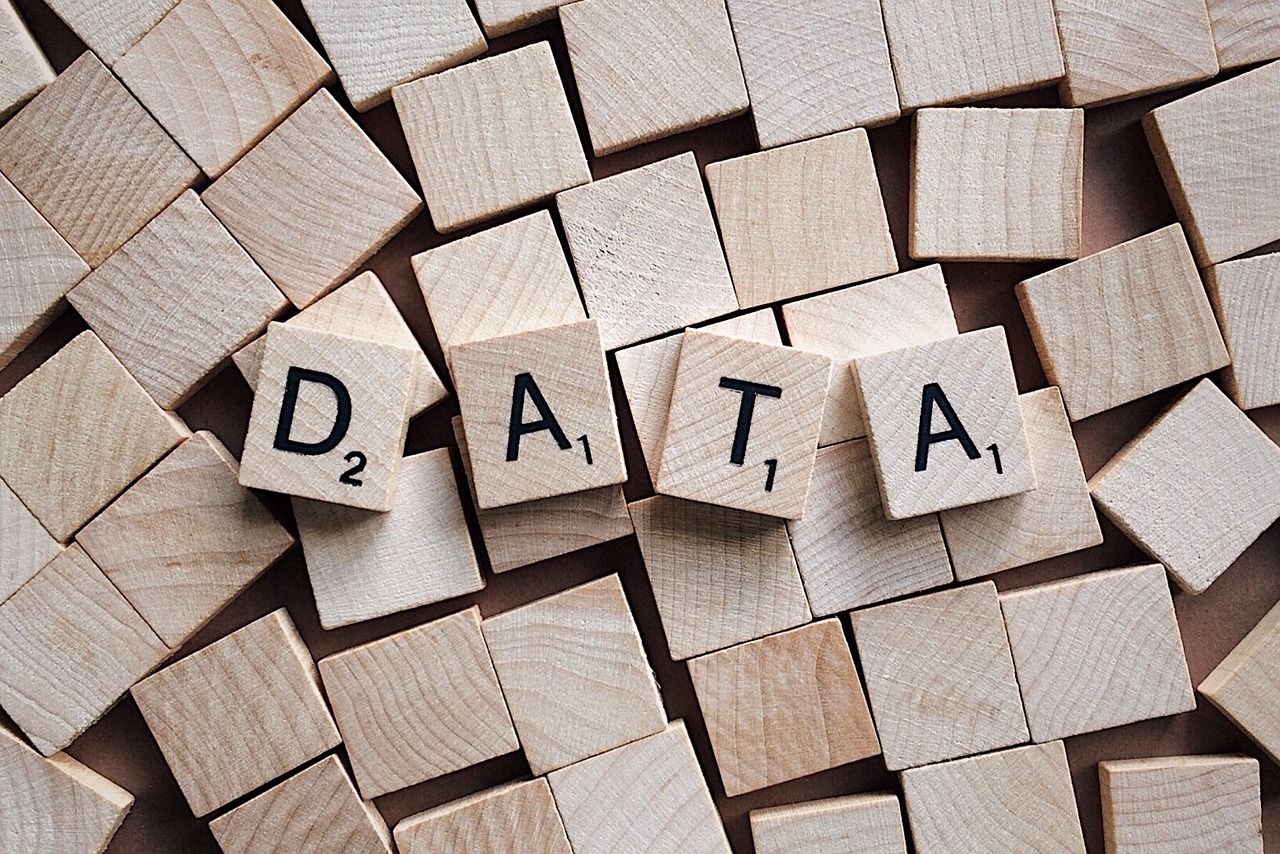
Making Predictions
Making predictions in the cryptocurrency market can feel like trying to catch smoke with your bare hands. The volatility and unpredictability of crypto prices often leave even the most seasoned investors scratching their heads. However, with the right data visualization techniques, you can transform that chaos into clarity. By leveraging visual data, you can spot patterns and trends that might otherwise go unnoticed. This is where the magic happens!
One of the most effective ways to use data visualization for predictions is through the analysis of historical price trends. By examining line charts, for instance, you can identify recurring patterns that have historically preceded significant price movements. Think of it as looking at the footprints in the sand; they tell a story about where the market might be headed next. When you see a pattern forming, such as a series of higher highs and higher lows, it could indicate a bullish trend, while lower highs and lower lows might suggest a bearish sentiment.
Additionally, combining different types of visualizations can enrich your analysis. For example, using heat maps alongside line charts can provide insights into market sentiment and trading volumes. A heat map can highlight areas of high trading activity, which often correlate with price movements. If you notice that a particular cryptocurrency has a surge in trading volume while its price is also trending upward, it might be a strong signal to consider entering the market.
Moreover, predictive analytics tools that incorporate machine learning algorithms can take data visualization to the next level. These tools analyze vast amounts of historical data to identify potential future price movements. By visualizing the output of these algorithms, you can make more informed predictions. Imagine having a crystal ball that not only shows you the past but also provides insights into the future—this is what advanced data visualization can offer.
In summary, making predictions in the crypto market is not just about gut feelings or hunches; it requires a strategic approach to data analysis. By utilizing various visualization techniques, you can uncover hidden trends, gauge market sentiment, and ultimately make more accurate predictions. Remember, the key is to stay adaptable and continuously refine your analysis as new data comes in. The crypto market is ever-changing, and your strategies should be too!
- What is the best visualization tool for crypto analysis?
While there are many tools available, TradingView and CoinMarketCap are among the most popular for their user-friendly interfaces and comprehensive data.
- How can I identify trends using visual data?
Look for consistent patterns in line charts, and pay attention to support and resistance levels to gauge potential trend reversals.
- Can data visualization help in risk management?
Absolutely! By visualizing your portfolio's performance, you can identify which assets are underperforming and make informed decisions about where to allocate your resources.
Frequently Asked Questions
- What is data visualization in cryptocurrency analysis?
Data visualization in cryptocurrency analysis refers to the process of transforming complex data sets into visual formats like charts and graphs. This makes it easier for investors and traders to identify patterns, trends, and insights that can inform their decision-making in the volatile crypto market.
- Why is data visualization important for crypto traders?
Data visualization is crucial for crypto traders because it simplifies the interpretation of vast amounts of data. By using visual tools, traders can quickly spot trends, monitor market movements, and make informed decisions without getting lost in numbers and statistics.
- What are some popular tools for data visualization in crypto?
There are several popular tools for data visualization in the cryptocurrency space, including TradingView, CoinMarketCap, and CryptoCompare. These platforms offer various features like interactive charts, real-time data tracking, and comprehensive market analytics, making them invaluable for crypto analysts.
- How do line charts help in cryptocurrency analysis?
Line charts are effective for tracking price trends over time. They allow traders to see how a cryptocurrency's price has changed, making it easier to identify potential investment opportunities or market reversals based on historical data.
- What are heat maps, and how are they used in crypto analysis?
Heat maps are visual representations that display data density and market sentiment. In cryptocurrency analysis, they can show trading volumes and price movements across different cryptocurrencies, helping traders assess which assets are gaining or losing interest.
- How can I interpret visual data effectively?
To interpret visual data effectively, focus on identifying key trends and patterns. Look for bullish or bearish signals in the charts, and consider using additional indicators to confirm your findings. This approach will help you make more informed trading decisions.
- Can data visualization help predict future market movements?
Yes, data visualization can assist in forecasting future market movements. By analyzing historical trends and patterns, traders can make educated predictions about potential price changes, enabling them to strategize their trades more effectively.

